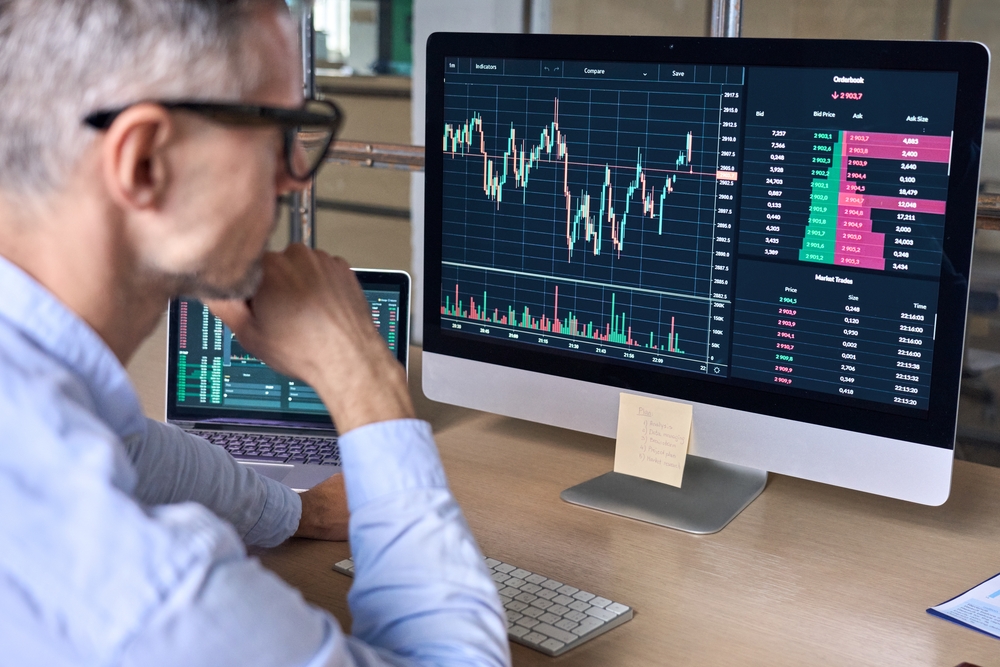Artificial Intelligence Utilizes Finger Taps to Monitor Parkinson’s Disease

Researchers embrace artificial intelligence to evaluate video recordings and enhance the tracking of the disease’s progression.
Researchers from the University of Florida’s College of Health and Human Performance Institute have developed an artificial intelligence (AI) system that effectively uses patient recordings of hand movements to monitor the advancement of Parkinson’s disease (PD).
The system assesses fast tapping movements between the index finger and thumb and can identify minute changes that are hard for people to recognize. This has led to more precise and efficient diagnosis and disease tracking.
AI Revolutionizes Parkinson’s Disease Monitoring
According to Diego Guarin, an assistant professor who created this technology, patients can record themselves carrying out the test. The software assesses and alerts the physician about the patient’s movements. Besides, Diego revealed that by analyzing the videos, they can identify minimal changes in hand movement attributes of PD that might be hard for physicians to spot.
Parkinson’s disease, which affects millions globally, has no cure, and its causes remain unclear. The progress condition affects the nervous system and body parts controlled by nerves. This results in tremors, slow movements, speed alterations, and other symptoms. Since symptoms emerge gradually and definitive tests are nonexistent, clinicians must depend on various exercises to detect and assess the condition’s gravity. Nevertheless, the present rating strategy can be affected by subjective interpretations, potentially resulting in inaccuracies.
Enter artificial intelligence. An automated system can reveal information previously unseen. The new artificial intelligence tool detected the precise time taken to open and close fingers, indicating that Parkinson’s disease delayed finger-opening movement. Guarin noted that this new information is nearly impossible to evaluate without the computer and video. This shows that technology can improve the characterization of how Parkinson’s disease impacts movement and offers new markers to aid in assessing therapy efficacy.
Importance of Finger-Tapping Test
HiPerGator, one of the globe’s biggest artificial intelligence computers, was utilized to improve the system further. Following training, testing, and refining various models with vast amounts of video information, the system can run on a smartphone, boosting accessibility.
The Parkison’s Foundation’s medical advisor Michael Okun claimed the progress was ‘transformative.’ In the university’s announcement, he said that the finger-tapping test is crucial for diagnosing and evaluating disease progression in PD. Besides, he noted that artificial intelligence could do what a professional needed to interpret.
This is not the first time AI has been crucial in fighting Parkinson’s disease. Earlier, researchers exploited the technology to identify symptoms of the condition up to seven years before clinical diagnosis by evaluating retinal scans. Besides, artificial intelligence’s role in correctly envisaging ailments such as cancer and Alzheimer’s has shown promise.
As researchers search for a cure, efficient monitoring, and early detection may unveil new possibilities for treating PD. A recent study revealed that mainstream, consumer-grade devices, particularly older iPhones and Apple Watches, might aid doctors in identifying symptoms of the disease earlier. This can hasten care options for a neurological condition that impacts 10 million individuals globally.
To better equip healthcare professionals with a means to detect the disorder’s progression within the shortest time possible, a group of researchers from the University of Rochester Medical Center conducted a 12-month study comprising 82 people with early-stage, untreated PD. Besides, the study’s control group involved 50 age-matched people.
The findings were published in npj Parkinson’s Disease, a peer-reviewed journal associated with Nature. Additionally, these results were an update to the findings reported in 2023. Dr. James Adams, an associate professor at the University of Rochester’s Department of Neurology and Movement Disorders, led the study.
The study’s key findings strengthen what other studies have revealed. In this case, digital gadgets can differentiate between persons with and without early Parkinson’s.
Besides, they are more sensitive compared to conventional rating scales for some PD measures. Consumer wearables and fitness technology have improved since the research was carried out. In this case, smart rings and watches have new sensors that gather more metrics.
DISCLAIMER: It's essential to understand that the content on this page is not meant to serve as, nor should it be construed as, advice in legal, tax, investment, financial, or any other professional context. You should only invest an amount that you are prepared to lose, and it's advisable to consult with an independent financial expert if you're uncertain. For additional details, please review the terms of service, as well as the help and support sections offered by the provider or promoter. While our website strives for precise and impartial journalism, please be aware that market conditions can shift unexpectedly and some (not all) of the posts on this website are paid or sponsored posts.









